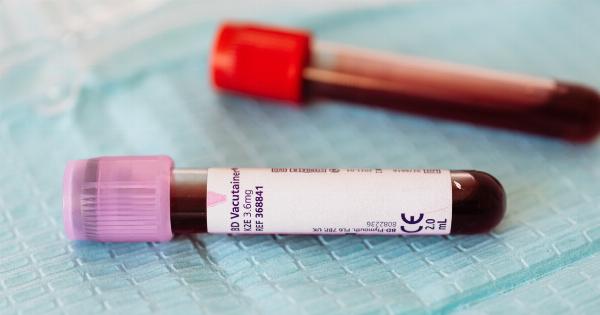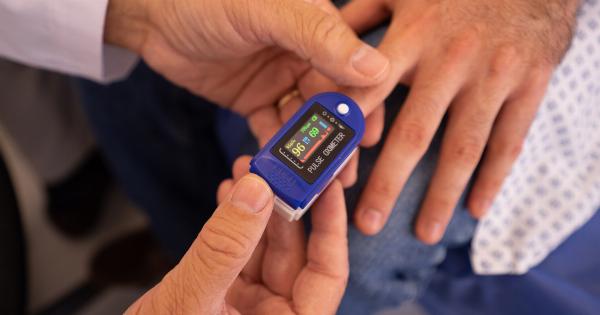Glaucoma is a serious eye condition that affects millions of people worldwide. If left undiagnosed and untreated, it can lead to irreversible vision loss and blindness.
Early detection is crucial for successfully managing the disease and preventing permanent damage to the optic nerve. However, traditional methods of glaucoma detection can be time-consuming, expensive, and require specialized equipment. The emergence of smartphone technology has revolutionized various aspects of our lives, including healthcare.
In recent years, smartphones have shown great potential in enabling swift and convenient detection of glaucoma.
How Smartphone Technology Facilitates Glaucoma Detection
Smartphones are equipped with a wide range of sensors, cameras, and computing power, making them ideal platforms for developing innovative healthcare applications.
Several smartphone-based techniques have been developed to aid in the early detection of glaucoma:.
1. Smartphone-Based Visual Field Testing
One of the key diagnostic tests for glaucoma is the visual field test, which assesses the peripheral vision. Traditionally, this test involves the use of specialized equipment and is performed in a clinical setting.
However, smartphone apps can now perform visual field testing through a technique called “flicker perimetry.” The app presents visual stimuli to the user’s peripheral vision, and the responses are recorded using the smartphone’s front-facing camera. This allows for quick and convenient visual field testing, even in the comfort of one’s home.
2. Smartphone Cameras for Optic Nerve Imaging
Imaging the optic nerve is crucial for diagnosing and monitoring glaucoma. Smartphone cameras have advanced significantly in recent years, with some models featuring high-resolution capabilities.
This has led to the development of apps that enable users to capture detailed images of their optic nerve using the smartphone’s camera. These images can then be analyzed by healthcare professionals to identify signs of optic nerve damage and determine the progression of the disease.
3. Smartphone Apps for Intraocular Pressure Monitoring
Monitoring intraocular pressure (IOP) is vital for managing glaucoma. Traditionally, IOP monitoring requires specialized tonometry devices that are only available in clinical settings.
However, smartphone apps have been developed that utilize the smartphone’s accelerometer and gyroscope to estimate IOP non-invasively. By analyzing the phone’s movements during specific maneuvers, such as a gentle head tilt, these apps can provide an estimate of the user’s IOP.
While these measurements may not be as precise as those obtained with traditional tonometry, they offer a convenient way for individuals to monitor their IOP on a regular basis.
4. Smartphone-Enabled Telemedicine
Telemedicine refers to the use of technology to provide remote healthcare services. Smartphones can play a significant role in facilitating remote glaucoma screening and monitoring.
Through video conferencing apps, patients can have virtual consultations with ophthalmologists, who can assess their symptoms, perform visual acuity tests, and provide necessary guidance. This approach reduces the need for in-person visits, particularly in areas with limited access to healthcare facilities.
5. Smartphone Reminder Systems for Medication Adherence
Adherence to prescribed medications is critical for managing glaucoma effectively. However, many patients struggle with remembering to take their medications as prescribed.
Smartphone apps can serve as reminder systems, sending alerts and notifications to ensure timely medication intake. Some apps also provide educational resources and information about the importance of medication adherence.
The Benefits and Challenges of Smartphone-Based Glaucoma Detection
The integration of smartphones into glaucoma detection offers several advantages:.
1. Accessibility and Affordability
Smartphones are widely accessible and affordable compared to specialized medical equipment. This makes glaucoma detection and monitoring more accessible to individuals who may not have easy access to healthcare facilities.
2. Convenience
Smartphone-based glaucoma detection allows individuals to perform tests and monitor their condition at their own convenience, reducing the need for frequent visits to the clinic.
This is particularly beneficial for individuals with busy schedules or limited mobility.
3. Early Detection and Intervention
The swiftness and convenience of smartphone-based detection methods enable earlier diagnosis and prompt intervention. Early detection significantly improves the chances of preserving vision and preventing further damage to the optic nerve.
Despite these advantages, there are also challenges associated with smartphone-based glaucoma detection:
1. Accuracy and Reliability
Smartphone apps and sensors may not match the precision of specialized medical equipment.
While they can provide valuable screening and monitoring tools, confirmed diagnoses and detailed assessments still require thorough examination by healthcare professionals.
2. User Compliance and Technical Limitations
For smartphone-based glaucoma detection to be effective, users must consistently perform tests and adhere to recommended protocols.
Additionally, technical limitations such as poor lighting conditions or low-resolution cameras can affect the accuracy of test results.
3. Ethical and Privacy Considerations
With the increased use of smartphones for healthcare, ethical and privacy concerns must be carefully addressed. The secure transmission and storage of sensitive health data are crucial to ensure patient confidentiality.
The Future of Smartphone-Based Glaucoma Detection
As smartphone technology continues to advance, so too will its potential for glaucoma detection. Ongoing research and development efforts aim to enhance the accuracy and reliability of smartphone-based tests.
Integration with artificial intelligence algorithms holds promise for automated analysis of visual field tests and optic nerve images, aiding healthcare professionals in making accurate diagnoses.
In conclusion, smartphones have emerged as powerful tools for swift glaucoma detection and monitoring. They offer accessibility, convenience, and the potential for early intervention.
While challenges exist, ongoing advancements promise to improve the accuracy and reliability of smartphone-based tests, ultimately contributing to better glaucoma management worldwide.






























